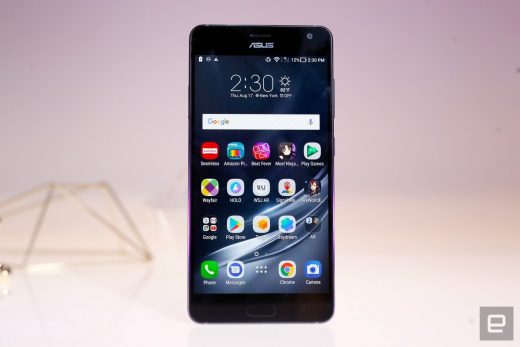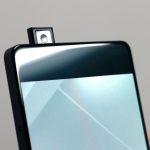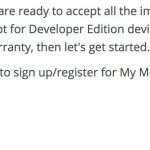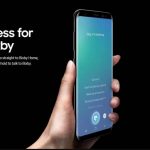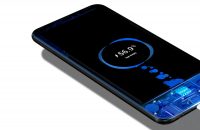ASUS ZenFone AR review: A ‘better’ Tango phone doesn’t mean much
Google’s Tango augmented reality technology isn’t new, and its debut last year on Lenovo’s Phab2 Pro left a lot to be desired. I mean, honestly, as neat as AR apps can be, an enormous phone with a mid-range chipset wasn’t the best vehicle for them. Meanwhile, ASUS was fine with waiting, and that has made all the difference. The new ZenFone AR ($599+) is better than Lenovo’s earlier Tango phone by almost every measure that matters, and it supports Google’s Daydream VR platform, to boot. The idea of a phone that’s as good at augmented reality as it is at virtual reality is tantalizing, but I’m not convinced the ZenFone AR is going to make a believer out of anyone.
If you looked at the ZenFone AR straight on, I doubt you’d remember anything about it. It’s a slab of a phone with a 5.7-inch AMOLED screen, an 8-megapixel camera and a sluggish fingerprint sensor built into the home button. Pretty drab, though the glass face and brushed metal edges feel sturdy enough. Meanwhile, you’ll find a now-standard USB-C port on the phone’s bottom edge for charging and data transfer, along with a tray for two nano-SIMs and a microSD card on the phone’s left side. Be careful, though: While the rest of the phone is well built, the tray is so flimsy that I had trouble popping in a SIM card.
As with Lenovo’s Tango phone, though, things get much more interesting when you flip the device over. For Tango’s space-sensing powers to work, it needs three cameras, all of which are clustered together under a dark metal plate. It’s a neat flourish that breaks up all the faux leather covering the phone’s back, a design choice that made me instantly nostalgic for the days of the LG G4 and Samsung’s Note Edge. To be clear, the ZenFone isn’t as luxurious as those earlier phones, but it sure is distinct: For better and worse, no other flagship that’s come out this year feels quite like the ZenFone AR.
Other factors make the ZenFone a distinctive option, for better or worse. ASUS managed to squeeze a standard headphone jack in here, which is always nice to see when this handy connector is teetering on the edge of extinction. Less nice is the lack of any water resistance. This won’t be a deal-breaker for everyone, but it would’ve been nice to see on such a pricey phone. Thankfully, what’s inside counts for a lot: The ZenFone AR packs a Qualcomm Snapdragon 821 chipset and an Adreno 530 GPU. Yes, we know, those specs are a little last year. There’s still plenty of life in this silicon, though, and this time it’s paired with either 6GB of RAM and 64GB of storage, or 8GB of RAM and 128GB of storage — we’ve been testing the latter.
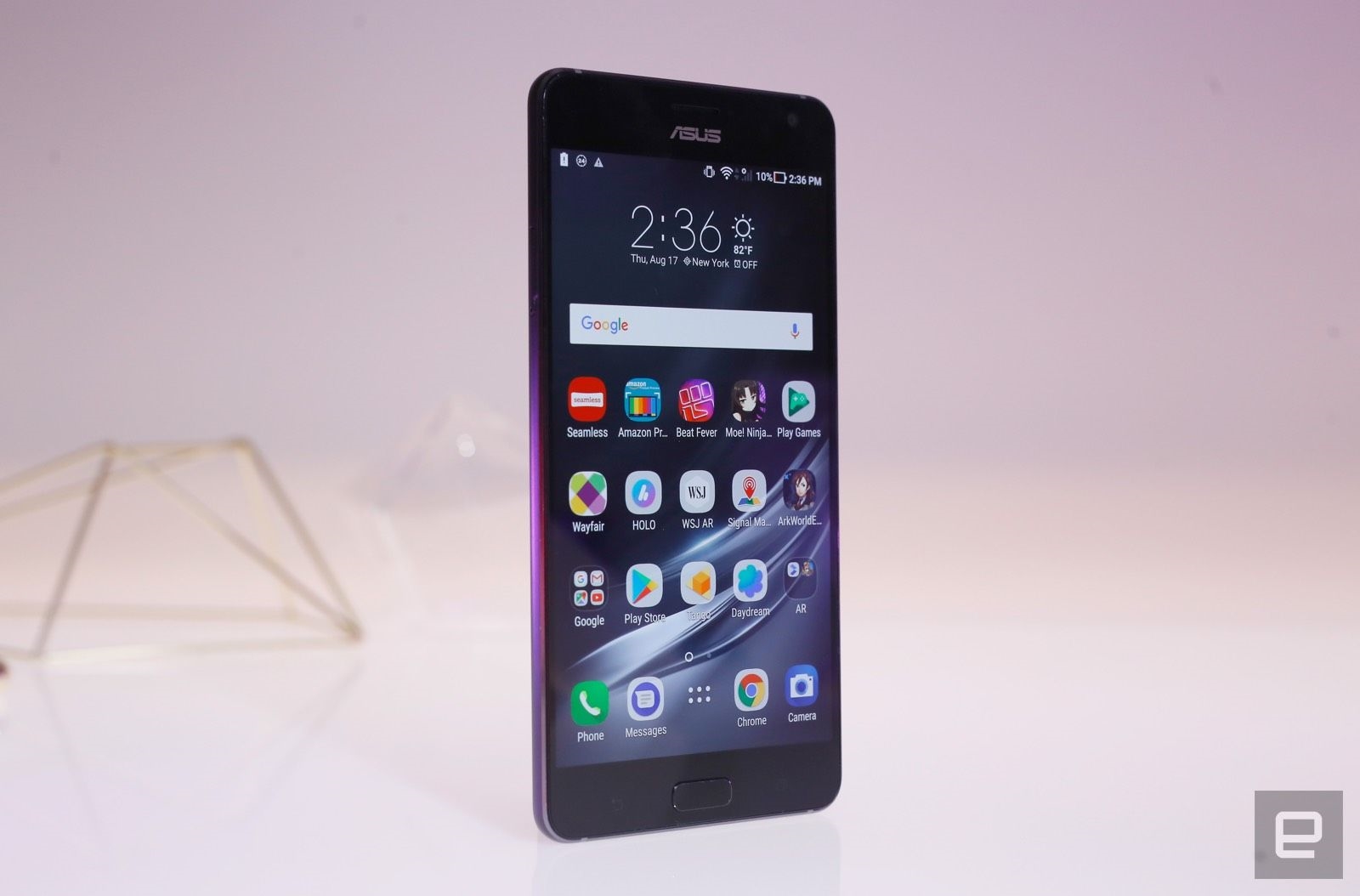
Display and sound
The ZenFone’s exterior design feels pretty ho-hum, but its 5.7-inch AMOLED screen is pleasantly surprising. It runs at the standard Quad HD (2,560 x 1,440 resolution), so everything’s nice and crisp, and viewing angles are excellent as well. You’d expect an AMOLED screen to feature some bold colors, and this panel definitely does. More impressive are the thorough screen calibration options ASUS offers. By default, the screen runs in an über-vibrant “Super Color” mode, but you can quickly switch into a more conservative color temperature if that’s your speed. And if that’s not right either, you can fiddle with the hue and saturation until you’ve got it just right — even if that means turning the screen black and white.
The ZenFone’s single speaker is better than expected too. While most phone speakers sound pretty wimpy, this one gets very loud and delivers thick, substantial audio with minimal distortion. There’s also an “Outdoors” mode that flattens the sound and effectively kills the bass — all in the name of improving audio quality when you’re traipsing around outside. That might not sound great — and it doesn’t, really — but it still helped keep my podcasts loud and listenable during my walks to and from the subway. Things get better when you plug in some headphones, thanks to a handful of optimization tools — one tunes audio depending on what kind of cans you’ve just plugged in, and DTS’ Headphone X simulates more spacious environments, to make music and movies sound more immersive. The latter makes more of a difference, to the point that I made sure to have it on every time I fired up a Spotify playlist.
Software
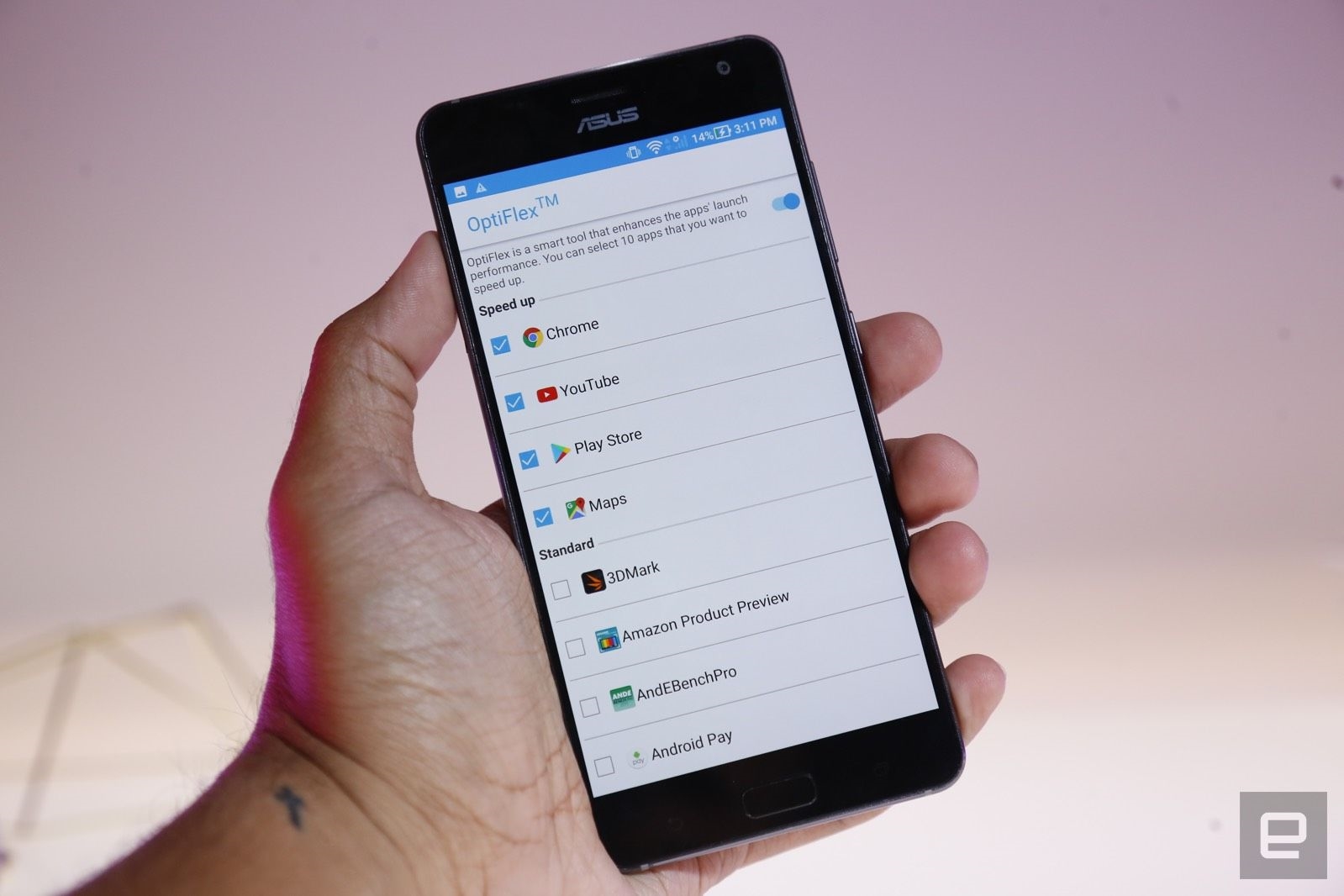
Wow. While companies like Samsung and HTC have tried to pursue cleanliness, ASUS seems to value flexibility over subtlety. The result is a version of Android 7.0 Nougat that’s loaded — maybe even overloaded — with flourishes and features. Some things are more obvious than others. Swiping up from the home screen invokes a grid of settings for managing ASUS’ ZenUI, including options for swapping out icon packs, installing new themes and changing how your home screen panels animate as you swipe through them. Not enough for you? There’s a Moto-like always-on screen mode that keeps the time and date visible on the ZenFone’s display, and it seems to have a negligible effect on battery life.
ASUS’ customizations extend beyond cosmetics too. If thumbing through a list of apps has gotten old, you can draw letters on the screen to launch apps instead. There’s also a one-handed mode that shrinks the screen to a more manageable size with a double tap of the home button. This is helpful for folks who would prefer a smaller screen, except the shrunken display window sticks to the left side of the screen, with no clear way to move it. (After some Googling, it turns out you have to long-press the top of the window, then drag it around.) Meanwhile, the included Optiflex app purports to make apps launch more quickly … somehow. As mentioned earlier, the version of the phone we’re testing has 8GB of RAM, so it seems like launch data is just being kept in RAM to keep everything running smoothly. The thing is, while ASUS says apps can launch nearly twice as fast as normal with Optiflex running, I never noticed a significant difference.
So yeah, there’s a lot of stuff going on here, but thankfully, most of it is easy to ignore. Some people will surely appreciate all of the options ASUS offers here, but fans of stock Android will want to run, not walk, away from this thing.
Camera
At the heart of ASUS’ camera cluster is a 23-megapixel sensor that, in addition to helping augment reality, also happens to take pretty good pictures. If I sound surprised, I am. Remember, this is the company that once built a smartphone-camera hybrid but then forgot to make that camera particularly good. Thankfully, most of the test shots I captured with the ZenFone AR were filled with detail and bright, generally accurate colors. Thanks to the inclusion of three autofocus methods (laser, phase detection and the bog-standard contrast), locking on to subjects is a quick affair. Even low-light performance isn’t too bad; you’ll get a decent amount of grain, but the blurriness and soft edges are mitigated somewhat by 4-axis optical image stabilization.
You won’t have to look hard to find smartphones with better cameras — say, the S8s or the HTC U11 — but the ZenFone is capable of producing perfectly respectable photos. Ditto for the front-facing 8-megapixel camera, which dutifully churned out crisp, handsome selfies … until I went overboard with Beauty mode. Suffice it to say it doesn’t take much fiddling to turn an innocent self-portrait into some sort of alien caricature. And that’s just one of the photo modes ASUS included here — there are 19 more, only a handful of which are actually useful. HDR Pro and Super Resolution, which combines multiple images into one highly detailed one, are handy, even if the former occasionally makes for blown-out shots. Others, like the janky depth-of-field mode, never worked as well as they should have. And don’t get me started on Children mode, which allows you to play audio clips of lousy trumpets, among other things, to coax kids into smiling. I found few of these options worth using regularly, but I guess there’s something to be said about the camera’s flexibility.
Living with Tango
Google’s vision of a future with devices that sense the world around them is a potentially game-changing one, and now one of its biggest rivals is embracing it too. Needless to say, there’s a real chance that your next phone (or maybe your next-next phone) will support augmented reality. For Tango, though, the progress has been slow. It’s been a little less than a year since the first Tango phone launched, and the number of available apps hasn’t grown much; there are around 50 now, as compared with 40 or so in 2016. Some of Tango’s functional issues haven’t been solved, either: a decent chunk of available apps still have trouble detecting surfaces and remembering where objects or markers are.
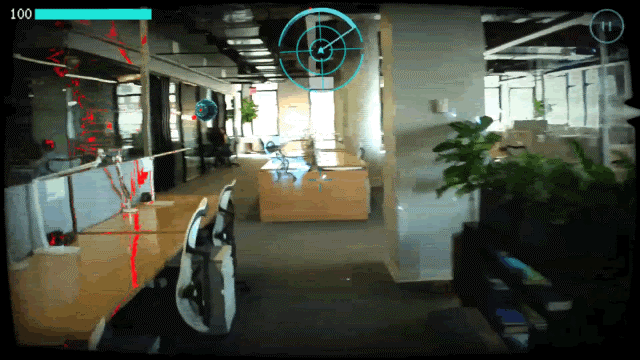
Generally speaking, apps fall into three buckets: games, utilities and miscellaneous stuff. Tango games like Phantogeist, a first-person AR shooter, remain a lot of fun — I spent about an hour wandering through the office, disrupting meetings in search of foes to blast with my lightning gun. It’s perhaps the most action-packed Tango game you’ll find, but it also highlights some of the biggest challenges for developing Tango content: Enemy orbs still float through walls the phone should be able to detect, and there’s nothing to keep you coming back once that initial wave of novelty wears off. Hot Wheels Track Builder plops you into an ersatz workshop where you can tinker with elaborate racetracks and launch cars on them. Unfortunately, the bits you plop down are prone to wandering, forcing you to reset your view once in a while. That’s the thing about Tango games right now: Even the stuff that’s been out since Tango launched can feel a little unfinished.
The utilitarian apps haven’t changed much, which is fine, since they worked fairly well the first time around. You can still measure things with Google’s Measure app with some degree of accuracy, or plop virtual Wayfair furniture into the space around you to see how it all fits. Maybe the most impressive new addition comes from BMW, which lets you virtually poke around a mostly life-size i3 or i8; you can even fire up the windshield wipers. Occasional tracking issues aside (Measure sometimes offers incorrect figures because it’s harder than expected to place the first marker), these apps were generally free of major issues. That’s more important than you’d think: While the games offer a brief respite from reality, Tango’s potential to help people get things done is what will drive more people to embrace AR.
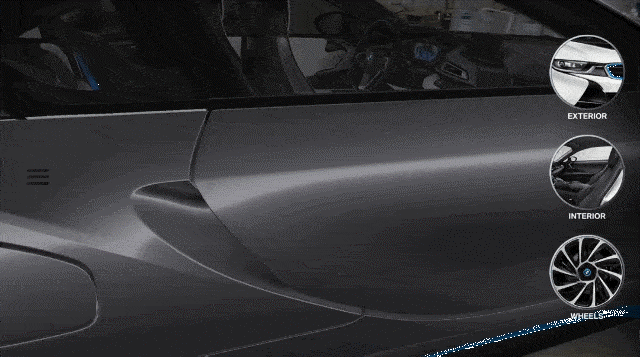
Then there’s the other stuff. The best current example in the Play Store is an app from the Wall Street Journal that shows you a three-dimensional table visualizing the rises and falls of the US stock market. It works, but using it isn’t particularly intuitive, and the app offers little extra functionality; once you home in on a company, you can check its stock price and glance at a few relevant headlines. If anything, it demonstrates one of the most crucial challenges facing augmented reality developers: How do you present information in a way that makes valuable use of the “space” AR provides? With augmented reality being such a nascent technology, good answers are hard to come by.
Like the last time I tested Tango, the experience felt like a slice of the future when everything worked the way it’s supposed to. Unfortunately, the novelty of most Tango apps wears off quickly. That’s partially a sales problem — if there were more Tango phones out in the world, developers would have more of an incentive to build great experiences for it. For now, though, the Tango remains a promising platform held back by its limited appeal.
Performance and battery
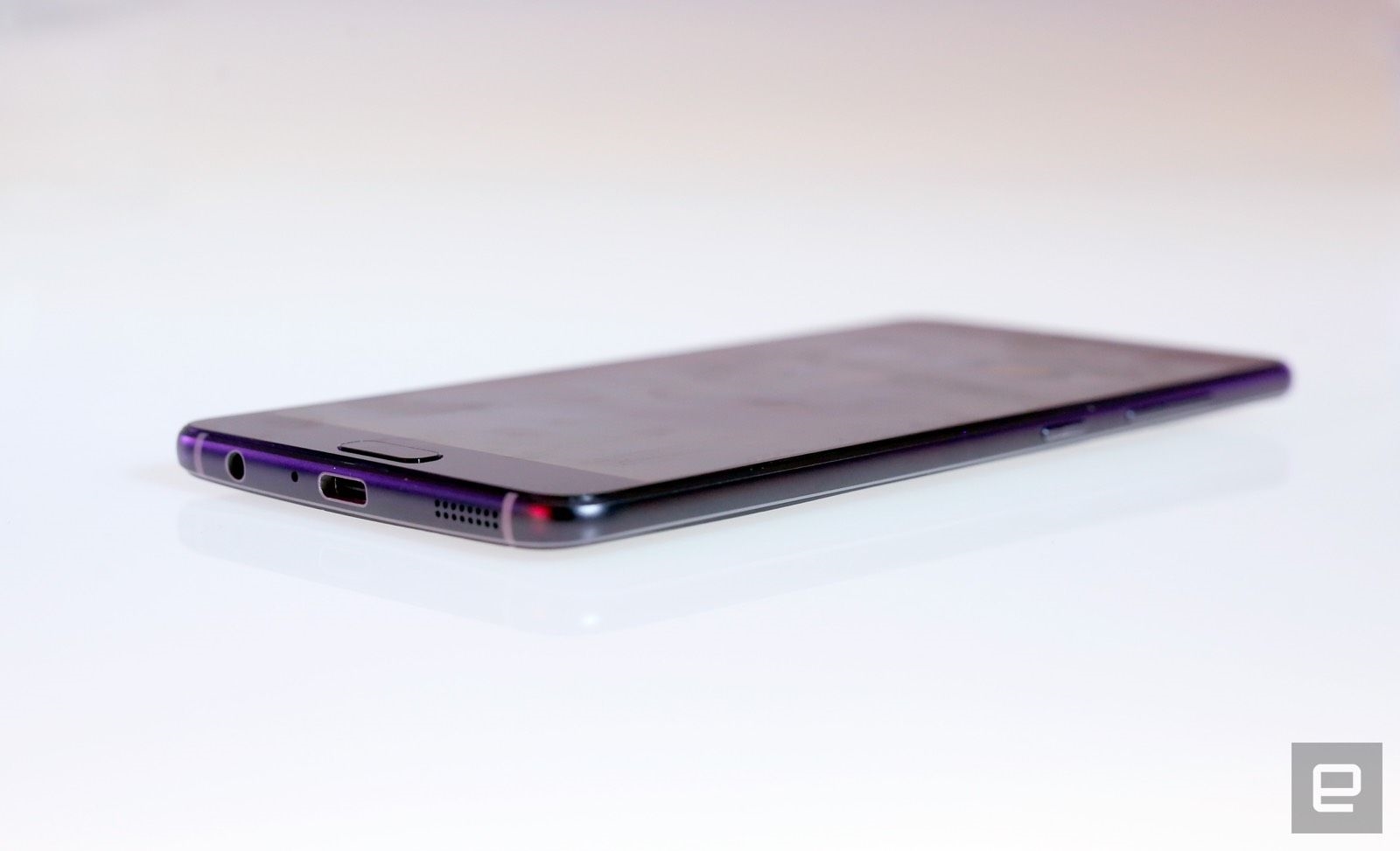
As mentioned, the ZenFone AR packs a Qualcomm Snapdragon 821, a chipset from last year that still packs a punch. Despite ASUS’s heavy touch with its software, the ZenFone ran smoothly whether I was launching apps or furiously multitasking in an effort to stymie the phone. In day-to-day use, you’d be hard-pressed to tell the difference between this thing and a Snapdragon 835-powered device … unless you’re a fan of visually intense games and VR content. I noticed occasional moments of lag and some visual tearing while playing high-end titles like Afterpulse, as well as when I had the ZenFone plugged into Google’s Daydream VR headset. These instances are the exception, not the rule, though, and it’s nice to finally see a Tango phone that doesn’t skimp on the horsepower.
| ASUS ZenFone AR | Galaxy S8 Plus | LG G6 | OnePlus 5 | Moto Z Force | |
|---|---|---|---|---|---|
| AndEBench Pro | 13,711 | 16,064 | 10,322 | 17,456 | 16,455 |
| 3DMark IS Unlimited | 30,634 | 35,626 | 30,346 | 40,081 | 28,964 |
| GFXBench 1080p Manhattan Offscreen (fps) | 46 | 55 | 42 | 60 | 49 |
| CF-Bench | 30,409 | 64,441 | 29,748 | 78,935 | 45,803 |
I only wish I could say the same about the ZenFone’s battery. There’s a 3,300mAh cell tucked inside, which just barely got me through most workdays; I’d pull the phone off the charger between 7 AM and 8 AM, and it would be right on the edge of death by 6 PM. Things got worse when I spent time playing Daydream VR games or using Tango apps for more than a few minutes. Unless you’re very judicious, you’ll have to charge the phone promptly every night. Meanwhile, in Engadget’s battery rundown test, the ZenFone AR looped an HD video with screen brightness set to 50 percent for just over 10 hours before finally dying. That’s well short of the Galaxy S8 and OnePlus 5, and even the HTC U11, a device with a smaller battery.
The competition
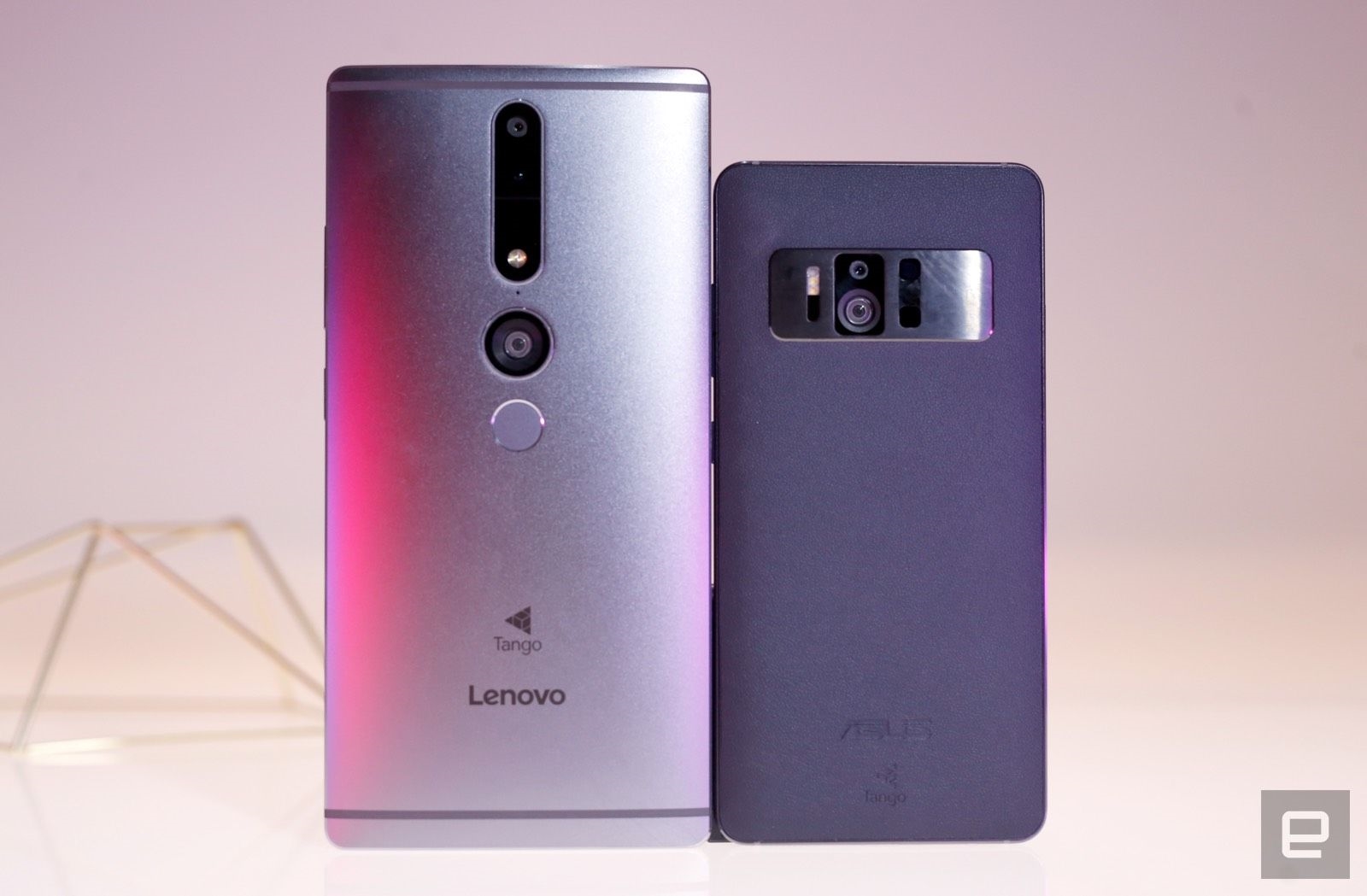
I’m obliged to mention Lenovo’s Phab2 Pro, since it’s literally the only other choice for would-be Tango users, but there’s little reason to take the plunge. Sure, its software is a little tidier, and it has a bigger battery, but otherwise, we’re working with a bigger, slower phone that will never get a Nougat update. At $499, it’s markedly cheaper than the ZenFone AR, but anyone considering splurging on a Tango phone should definitely shell out the extra money.
If you’re not strictly looking for a Tango device, you have plenty of powerful alternatives. As fragile as it can be, I’m a big fan of the HTC U11 — it sports one of the nicest smartphone cameras around, and the company’s Android skin is much, much cleaner. There are plenty of gimmicks on board, but don’t let them distract you: At its core, the U11 is an undeniably great smartphone. Ditto for either of the Galaxy S8s, which often go on sale and pair top-tier performance with some of the most beautiful mobile hardware available today.
Wrap-up
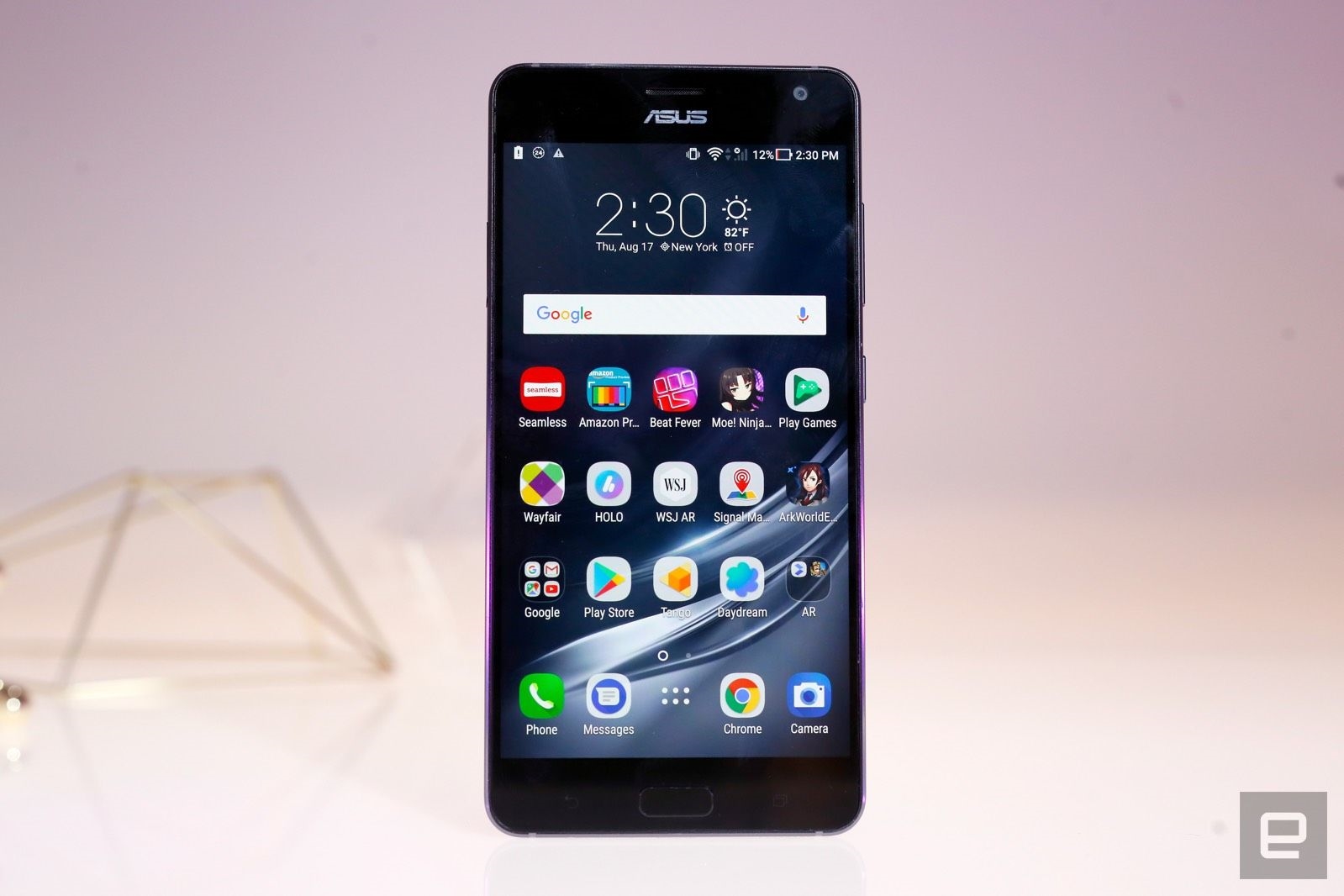
Lenovo’s Phab2 Pro might have been first, but the ZenFone AR’s superior hardware makes it the best Tango device yet. That’s not really saying much, though: The Tango experience isn’t much better than it was a year ago, and there still isn’t much there to win over people who haven’t already bought into Google’s AR vision. If you’re already tantalized by the potential of augmented reality to change how we see the world, the ZenFone AR is worth looking into. For literally everyone else who just wants a damn good all-around smartphone, there’s little here for you.
(97)

